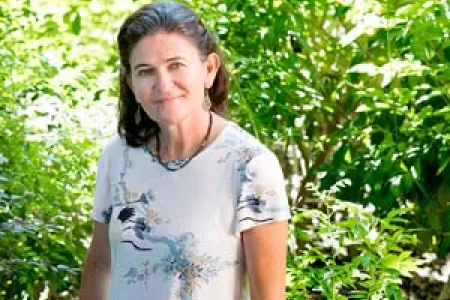Alien invasion research to protect the Galápagos Islands
An international research team has identified the pathways that more than 1500 alien species have taken to the Galápagos Islands, which will help to protect the UNESCO World Heritage-listed area from future threats.
The study, led by Charles Darwin University PhD candidate Veronica Toral-Granda in partnership with the Galapagos National Park Directorate, Galapagos Biosecurity Agency, Tourism Monitoring System and the Charles Darwin Foundation, investigated the diverse pathways taken by the invasive plant and animal species.
“Alien species are one of the biggest threats to natural ecosystems world-wide and are of particular concern for oceanic archipelagos such as Galápagos,” Veronica said.
“So far, 1579 alien terrestrial and marine species have been introduced to Galápagos by humans, of which, about half were intentional.”
She said that most of the unintentional introductions, such as insects, had arrived on plants and plant-associated material, followed by transport vehicles, and commodities – particularly fruit and vegetables.
“The number, frequency and geographic origin of pathways for the arrival and dispersal of alien species to and within Galápagos have increased over time, tracking closely with the increase in human population (residents and tourists) on the islands.”
Veronica said that despite Ecuadorian Government efforts to implement biosecurity protocols, more needed to be done to manage the invasion pathways so that the site’s biodiversity values are retained.
“Galápagos has exceptionally high levels of endemism, which means that the species under threat are not found anywhere else in the world,” she said.
“Intentional introductions of alien species should decline if biosecurity is strengthened, but there is a danger that unintentional introductions will increase further as tourism on Galápagos expands.”
The invasion of alien species began between 1685 and 1850 with the introduction of goats and rats by whalers and buccaneers, and although goats were eradicated on some islands by a government control program, Veronica said significant threats remained.
“Species such as the introduced parasitic fly Philornis downsi are causing close to 100 per cent mortality rates of nestlings of some of the iconic Darwin finch species,” she said.
Veronica said the research was vital to improve understanding of alien species’ pathways in a bid to prevent new incursions and make recommendations to strengthen biosecurity.
The research, titled “Alien species pathways to the Galápagos Islands, Ecuador” and supported by an Australian Research Training Program scholarship and the Galápagos Conservancy, was published today in PLOS ONE. To read more visit W: http://journals.plos.org/plosone/article?id=10.1371/journal.pone.0184379
